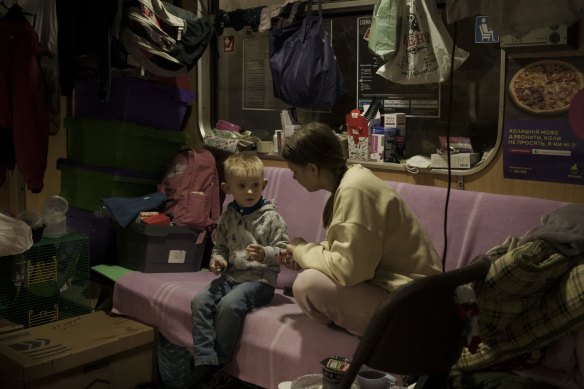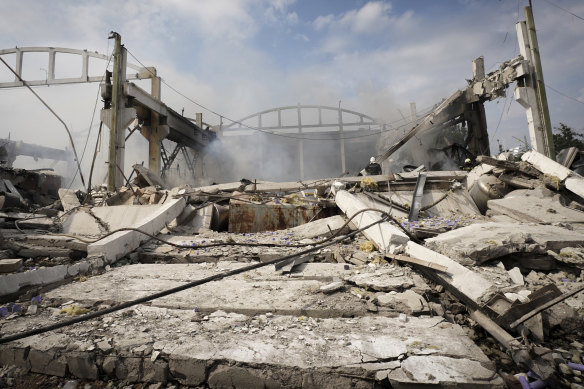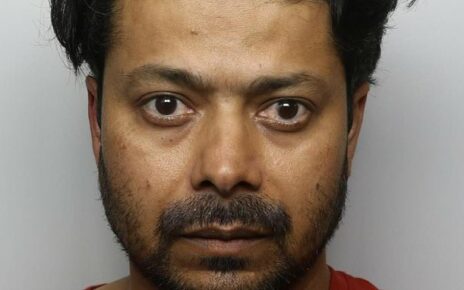Every week, I look at a map of Ukraine showing areas now controlled by Russia. There are roads and towns in the eastern Donbas region where I was able to freely walk and drive around two months ago that are now under Russian occupation.
It’s the easiest way to confirm that Ukraine is losing the war.
You may read regularly about some new shipment of weapons which will help Ukraine turn the tide in the east, or mount a major counter-offensive in the south. But it hasn’t happened yet.
Sometimes it feels like the West is giving Ukraine just enough weaponry to hang on, rather than to win, even if it has made some interesting recent moves in striking at Russia’s naval bases in Crimea.
It is true that Russian troops have made no significant territorial gains since they took the eastern city of Lysychansk and hence full control of it on July 2, two weeks after I was in the city.
But Russia did order a two-week operational pause to solidify its gains after taking Lysychansk, and it has now mounted a withering assault on the nearby city of Siversk.
People sit inside a subway car parked in a station being used as a bomb shelter, as Russian attacks continue in Kharkiv, Ukraine.Credit:AP
Since President Vladimir Putin gave up his goal of taking the capital, Kyiv, and changed his strategy to capturing all of the Donbas and consolidating his gains in the south, Russia has been winning in what is a long, grinding conflict. That is the brutal truth of the matter.
This probably hasn’t sunk in for many Australians. Because it was roughly at the time when Putin started shifting his strategy that interest in the war dropped off.
After spending six weeks of this year in Ukraine, much of it in or near front-line positions in the east, my only prediction is this: the war has a long way to go yet. This is because both Putin and Ukrainian President Volodymyr Zelensky are many more anniversaries away from achieving their goals.
Putin’s goal is to take all of the Donbas, and then maybe mount another strike at Ukraine’s second-largest city of Kharkiv. While now controlling more than 20 per cent of Ukraine, he is many months away from achieving that.
Ukrainian firefighters work in destroyed buildings after a rocket attack in Kharkiv on August 19.Credit:AP
And Zelensky’s objective is to push Russian soldiers out of all areas Ukraine controlled prior to Russia’s invasion on February 24. Zelensky’s goal, while inherently understandable, is even more unachievable than Putin’s as it currently stands.
So we are left with an almost stalemate in which Putin advances centimetre by centimetre in the east and Ukraine tries to mount a counter-offensive in the south to take back the key port city of Kherson.
So how will this end?
Peace, if we can call it that, will probably look something like this: Ukraine gives up everything it didn’t control before February 24 this year, and Russia withdraws from everywhere else. That means recognising Russia’s annexation of Crimea and handing over the two breakaway regions of the Donbas to Moscow-backed separatists.
But neither side is close to viewing this outcome as a win. Putin wouldn’t even consider it at the moment because he controls a lot more than that now, so he might as well keep going.
And Zelensky doesn’t because he wouldn’t have ever countenanced it before February 24, and therefore the war would be all for nothing. Most importantly, Ukrainians wouldn’t accept that outcome; they would view it as a humiliation.
It can’t be understated how unfair this settlement would be for Ukrainians.
Neither can it be understated how dreadful it will be for them if the country continues to lose ground to Russia.
But we will probably get to that outcome – or some rough version of it – after a lot more fighting and deaths.
Get a note directly from our foreign correspondents on what’s making headlines around the world. Sign up for the weekly What in the World newsletter here.
Most Viewed in World
From our partners
Source: Read Full Article



